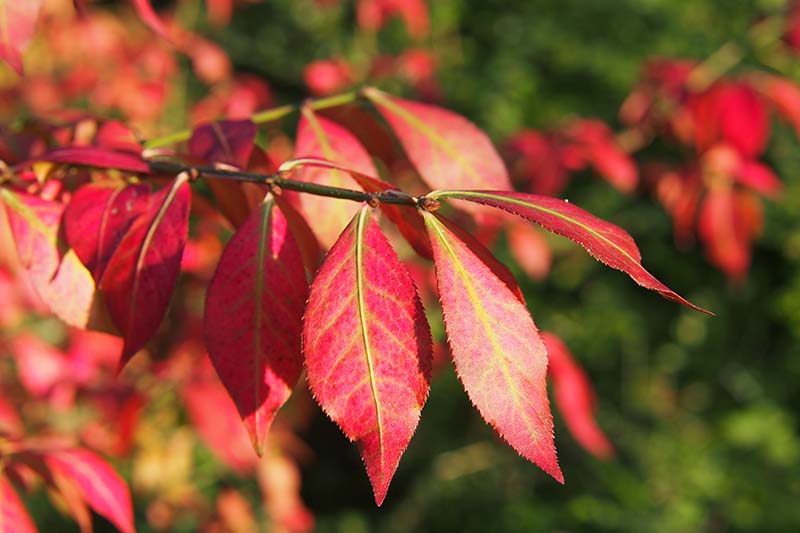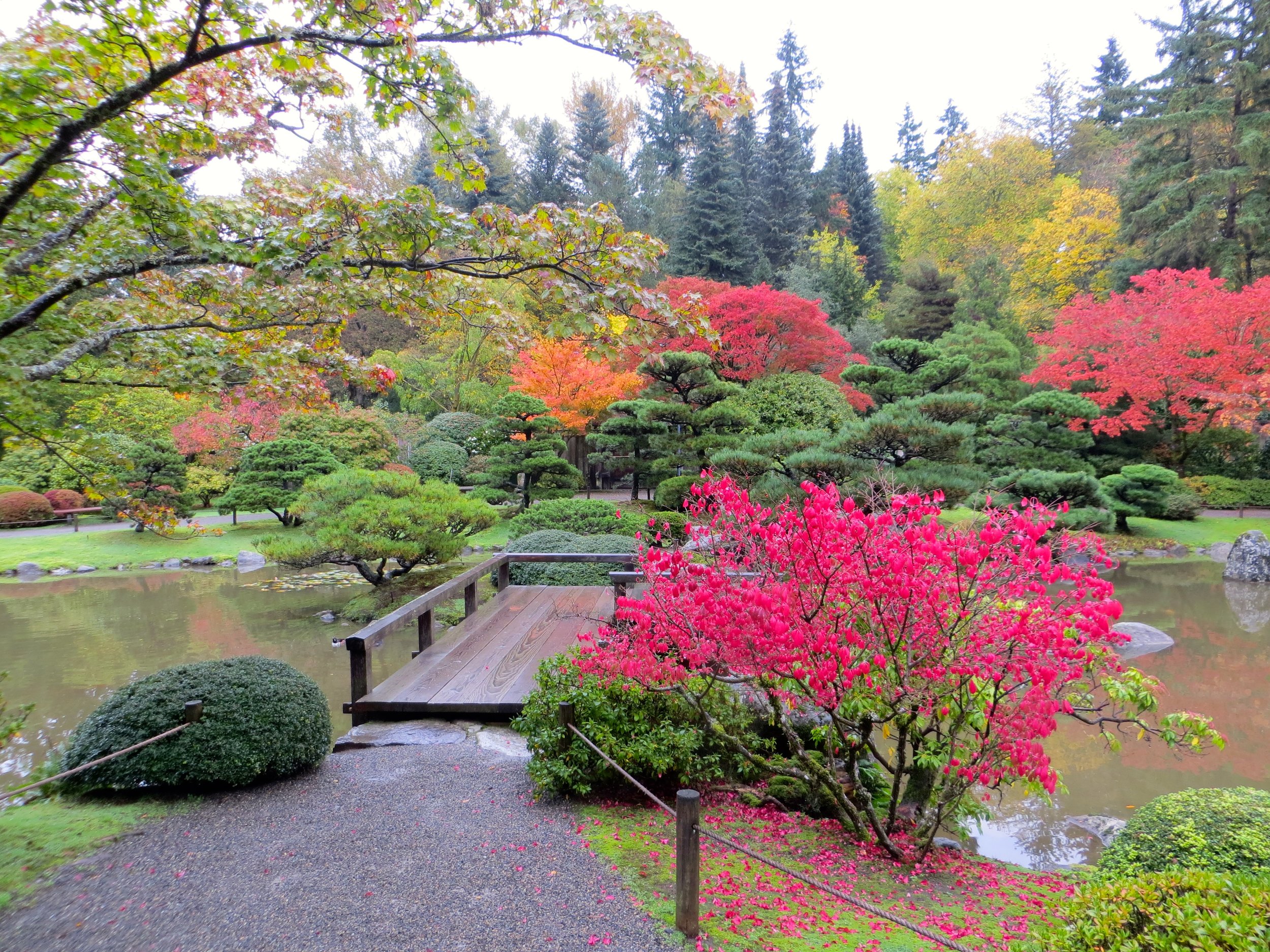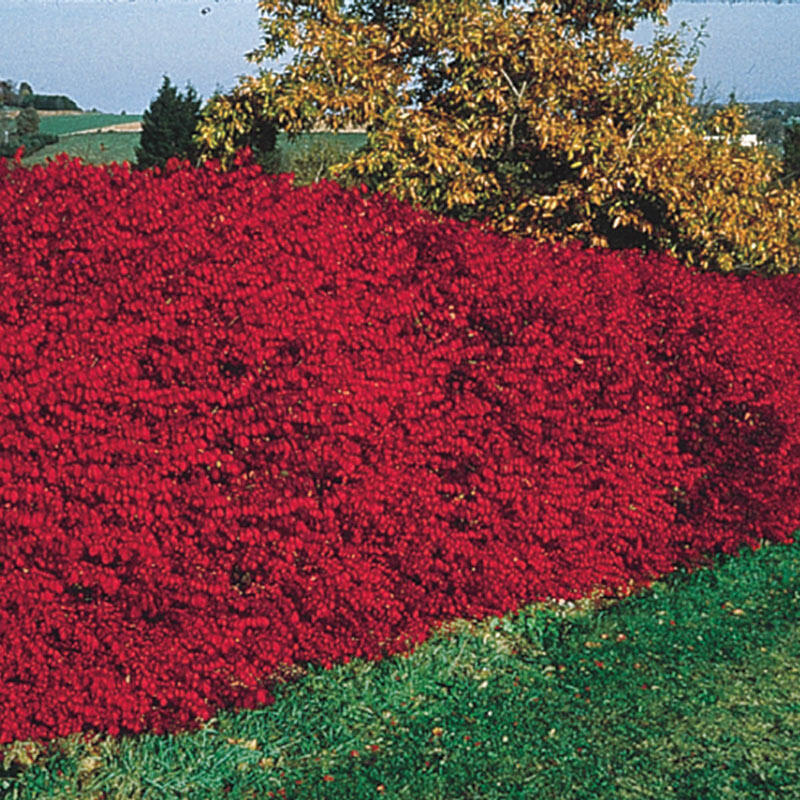How To Grow A Burning Bush Tree In Your Garden
Title: How to Grow a Burning Bush Tree in Your Garden
Introduction:
Burning bush (Euonymus alatus) is a popular landscaping shrub that is known for its beautiful fall foliage. The leaves of burning bush turn a brilliant scarlet or orange color in the fall, making it a striking addition to any garden. Burning bush is also relatively easy to care for, making it a good choice for even novice gardeners.
In this blog post, we will discuss how to grow a burning bush tree in your garden. We will cover topics such as choosing the right location, planting, watering, fertilizing, and pruning. We will also discuss some of the potential problems that you may encounter when growing burning bush, and how to deal with them.
Main Content:
Choosing the Right Location
Burning bush is a sun-loving plant that will not do well in shady areas. It prefers well-drained soil, but it can tolerate a wide range of soil types. Burning bush is also relatively drought-tolerant, but it will appreciate regular watering during the first year after planting.
When choosing a location for your burning bush tree, it is important to consider the size that it will eventually reach. Burning bush can grow up to 15 feet tall and 10 feet wide, so you will need to make sure that you have enough space for it to grow. You should also plant burning bush in an area where it will not be exposed to strong winds, as this can damage the branches.
Planting
Burning bush can be planted in the spring or fall. When planting, dig a hole that is twice as wide and as deep as the root ball of the plant. Backfill the hole with soil, tamping it down firmly to remove any air pockets. Water the plant deeply after planting.
Watering
Burning bush needs regular watering, especially during the first year after planting. Water the plant deeply once a week, or more often if the weather is hot and dry. Mulching around the plant will help to retain moisture in the soil.
Fertilizing
Burning bush does not need to be fertilized heavily. A light application of fertilizer in the spring will help to promote new growth and flowering. You can use a balanced fertilizer, such as a 10-10-10 fertilizer.
Pruning
Burning bush can be pruned in the spring or fall. Pruning is not necessary, but it can help to keep the plant in shape and promote new growth. You can prune the plant to maintain its size, shape, or to remove dead or damaged branches.
Potential Problems
Burning bush is generally a trouble-free plant, but there are a few potential problems that you may encounter. One common problem is leaf spot, which is a fungal disease that can cause brown or black spots on the leaves. Leaf spot can be treated with a fungicide.
Another potential problem with burning bush is deer damage. Deer are fond of eating the leaves of burning bush, so you may need to protect your plant with a fence or other barrier.
Conclusion
Growing a burning bush tree in your garden is a relatively easy task. By following the tips in this blog post, you can enjoy this beautiful and colorful plant for many years to come.
The burning bush tree is a beautiful and versatile plant that can add color and interest to any landscape. It is known for its fiery red fall foliage, which makes it a popular choice for autumn displays. Burning bush trees are also relatively low-maintenance and can tolerate a variety of soil conditions.
If you are interested in learning more about the burning bush tree, please visit Home Gardening. This website provides comprehensive information on the plant's history, care, and cultivation. You can also find a variety of photos and videos of burning bush trees in their natural habitat and in gardens.
FAQ of burning bush tree
- What is a burning bush tree?
A burning bush tree is a deciduous shrub or small tree that is native to North America. It is known for its bright red leaves in the fall, which can give the appearance of a burning bush. Burning bush trees are relatively easy to care for and can tolerate a variety of soil conditions. They are also relatively resistant to pests and diseases.
- How to plant a burning bush tree?
The best time to plant a burning bush tree is in the spring or fall. When planting, choose a location that receives full sun or partial shade. The soil should be well-drained. Dig a hole that is twice as wide and as deep as the root ball of the tree. Place the tree in the hole and backfill with soil. Water the tree thoroughly.
- How to care for a burning bush tree?
Burning bush trees are relatively low-maintenance. They need about an inch of water per week during the growing season. Fertilize the tree once a year in the spring with a balanced fertilizer. Prune the tree in the late winter or early spring to remove dead or diseased branches.
- How to propagate a burning bush tree?
Burning bush trees can be propagated from cuttings. Take cuttings in the summer from healthy, non-flowering branches. The cuttings should be about 4 inches long and have at least two sets of leaves. Remove the bottom leaves and dip the cutting in rooting hormone. Plant the cuttings in a well-draining potting mix. Keep the potting mix moist and place the cuttings in a warm location out of direct sunlight. The cuttings should root in about 4-6 weeks.
- How long does it take for a burning bush tree to grow?
Burning bush trees grow relatively quickly. They can reach a mature height of 6-10 feet in about 10 years.
- How to deal with burning bush tree pests and diseases?
Burning bush trees are relatively resistant to pests and diseases. However, they can be susceptible to aphids, scale, and powdery mildew. If you see any pests or diseases on your burning bush tree, you can treat them with insecticidal soap or fungicide.
- How to transplant a burning bush tree?
The best time to transplant a burning bush tree is in the spring or fall. When transplanting, dig a hole that is twice as wide and as deep as the root ball of the tree. Place the tree in the hole and backfill with soil. Water the tree thoroughly. Mulch around the tree to help retain moisture.
- How to stop burning bush tree from spreading?
Burning bush trees can spread by suckers. To stop a burning bush tree from spreading, you can dig up and remove any suckers that you see. You can also apply a root barrier around the tree.
Image of burning bush tree
- Burning bush tree in full bloom. The tree has bright orange leaves that are arranged in a spiral pattern. The leaves are surrounded by red and orange bracts, which give the tree its fiery appearance.
- Burning bush tree in fall. The leaves of the tree have turned red, orange, and yellow. The leaves are still arranged in a spiral pattern, but the colors are much more vibrant than in the spring.

- Burning bush tree in winter. The leaves of the tree have fallen off, revealing the bare branches. The branches are covered in small, brown thorns.

- Close-up of burning bush tree leaves. The leaves are a deep orange color with a slightly pointed tip. The leaves are arranged in a spiral pattern, with each leaf overlapping the one next to it.

- Burning bush tree in a forest. The tree is surrounded by other trees, but it stands out because of its bright orange leaves. The tree is about 10 feet tall and has a wide, spreading canopy.

- Burning bush tree in a garden. The tree is planted in a large garden. The tree is surrounded by flowers and other plants. The tree is about 6 feet tall and has a narrow, upright canopy.

- Burning bush tree as a hedge. The tree has been trimmed into a hedge. The hedge is about 3 feet tall and 10 feet wide. The hedge is a bright orange color and provides a colorful border for the garden.

- Burning bush tree as a bonsai. The tree has been trained into a bonsai. The bonsai is about 1 foot tall and has a small, compact canopy. The bonsai is a bright orange color and is a popular ornamental plant.

- Burning bush tree as a symbol in the Bible. The burning bush is a symbol of God's presence in the Bible. In the book of Exodus, Moses encounters God in a burning bush. The bush is not consumed by the flames, and Moses hears God's voice from the bush.
- Burning bush tree as a medicinal plant. The burning bush has been used as a medicinal plant for centuries. The leaves and bark of the tree can be used to treat a variety of ailments, including coughs, colds, and diarrhea.


Post a Comment for "How To Grow A Burning Bush Tree In Your Garden"